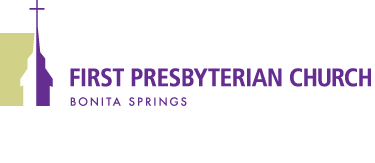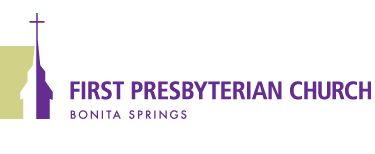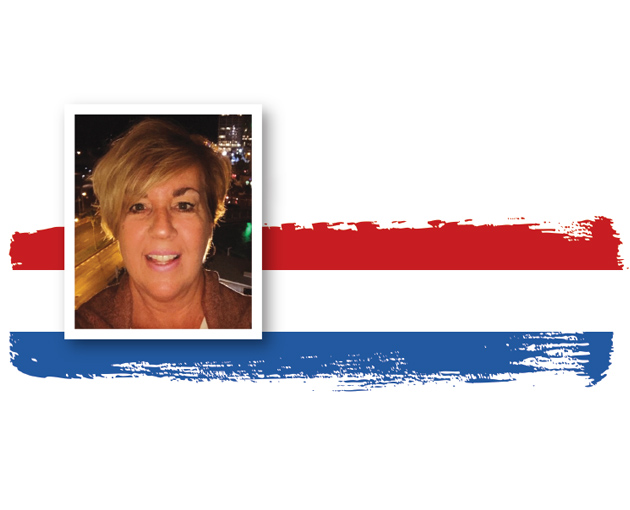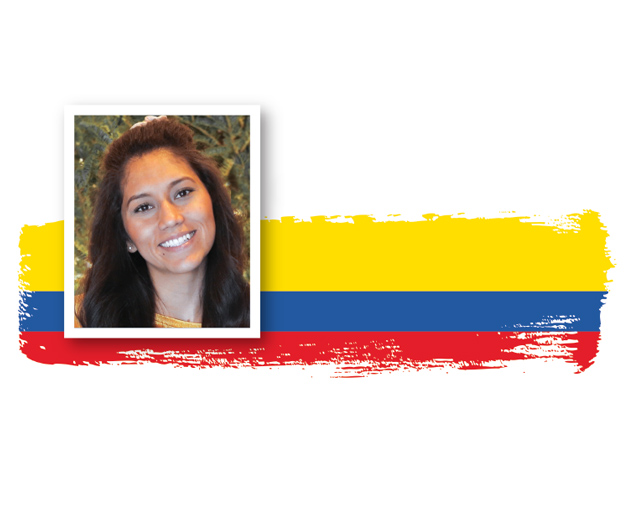Two Personal Portraits
To offer a personal perspective on immigration, the Epistle spoke with two members of our church staff who have undergone the naturalization process to become U.S. citizens. Trusha Barner and Karen Quintero were kind enough to share their thoughts about coming to America. We have included a brief bio on each of them and a short interview regarding their journey.
Trusha Barner
Trusha was born in the city of Utrecht in The Netherlands. She was only one-year old when she immigrated to America with her mother who was a nurse and her father, a banker. Her parents grew up during World War II and understood the great importance of personal freedom. Trusha became a U.S. citizen in 1978 and has since lived and traveled oversees. With over 20 years as both an educator and school administrator, Trusha took over as Director of Missions at First Church in 2015.
Karen Quintero
Karen was born in Bogota, Colombia. Her father was a systems engineer, and her mother was a stay-at-home mom. She immigrated to Florida with her parents and her two siblings in 1999, when she was just a child. She has lived in the U.S. for 21 years but continues to visit Colombia and cherishes the beauty and uniqueness of both cultures. From application to receipt of permanent residency took 10 years. Karen became a U.S. citizen in 2018 and currently works in Communications at First Church.
Q&A
Why did you want to become a citizen of the United States?
TRUSHA – I grew up listening to my parents share what an impact it made on them when the American soldiers came to liberate Holland from Nazi occupation during World War II. Both were teenagers and had not met each other at the time, but they each determined in their hearts that one day they would live in America. That of course made a huge impact on my life and gave me a love of the country my parents chose to come to. Also, I spent a lot of time traveling to Holland growing up, and although I loved it, I was always grateful to come back to my home in America!
KAREN – The U.S. has become a second home to me. It is the place where I have lived most of my life and it has given me so many opportunities and good experiences. I have come to love and value it as my (second) home country. It was important to me that I embrace not only the right to be a citizen but every duty that comes with that right.
What was the most difficult step for you in the naturalization process?
TRUSHA – It was a bit difficult giving up my Dutch passport for an American one initially, but after my first time traveling with an American passport, I was happy to have it because travel was so much quicker and easier!
KAREN – It was difficult not being able to leave the U.S. during my 10-year process of citizenship because it meant being away from all my family and friends who still lived in Colombia.
Tell us the first time you voted.
TRUSHA – In 1980 (Ronald Reagan vs Jimmy Carter).
KAREN – It will be 2020, and I am looking forward to it!
Is there a favorite food you miss from your home country?
TRUSHA – There is a Dutch comfort food called stamppot (translated “mash pot”) that is a hearty meal with several varieties. It always includes potatoes, meat, and one or more vegetables.
KAREN – All of it! Colombia has a very rich and flavorful kitchen. Thankfully, my mom has continued to create these traditional foods in our family. Bandeja Paisa is very popular; it consists of rice, pinto beans, steak, sweet plantains, arepa (corn), avocado, and two different types of Colombian sausage.
What was the biggest “culture shock” for you?
TRUSHA – I think the closest thing to culture shock that I experienced was being raised in a European manner which was a bit different from many of my American friends.
KAREN – Back in Colombia, it was the norm in homes, schools, and culture to have a certain level of respect when speaking to and answering adults. In general, I was surprised to hear the way some kids spoke to their teachers and the adults in this country.
IMMIGRATION: FAST FACTS
• The U.S. foreign-born population reached a record 44.8 million in 2018.
• Immigrants today account for 13.7% of the U.S. population.
• More than 1 million immigrants arrive in the U.S. each year. In 2018, the top country of origin for new immigrants was China (149,000 people), followed by India (129,000), Mexico (120,000), and the Philippines (46,000).
• U.S. foreign-born population is projected to reach 78 million by 2065.
from Pew Center Research, pewresearch.org






